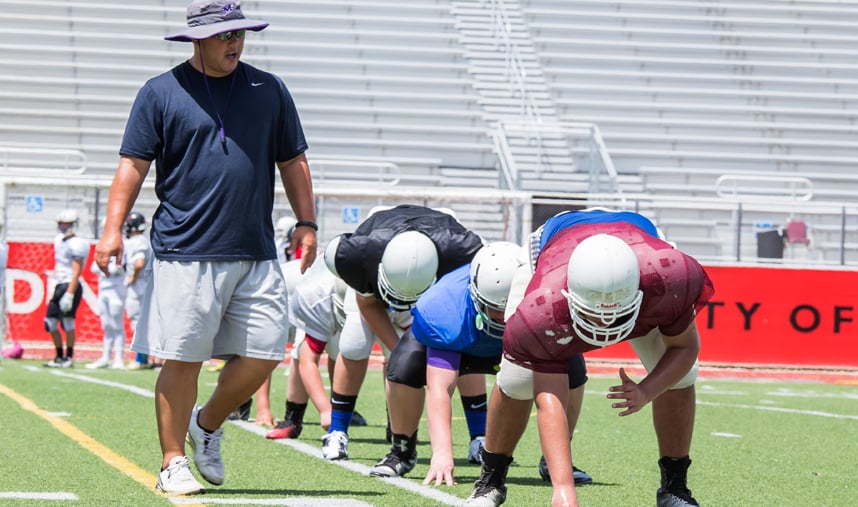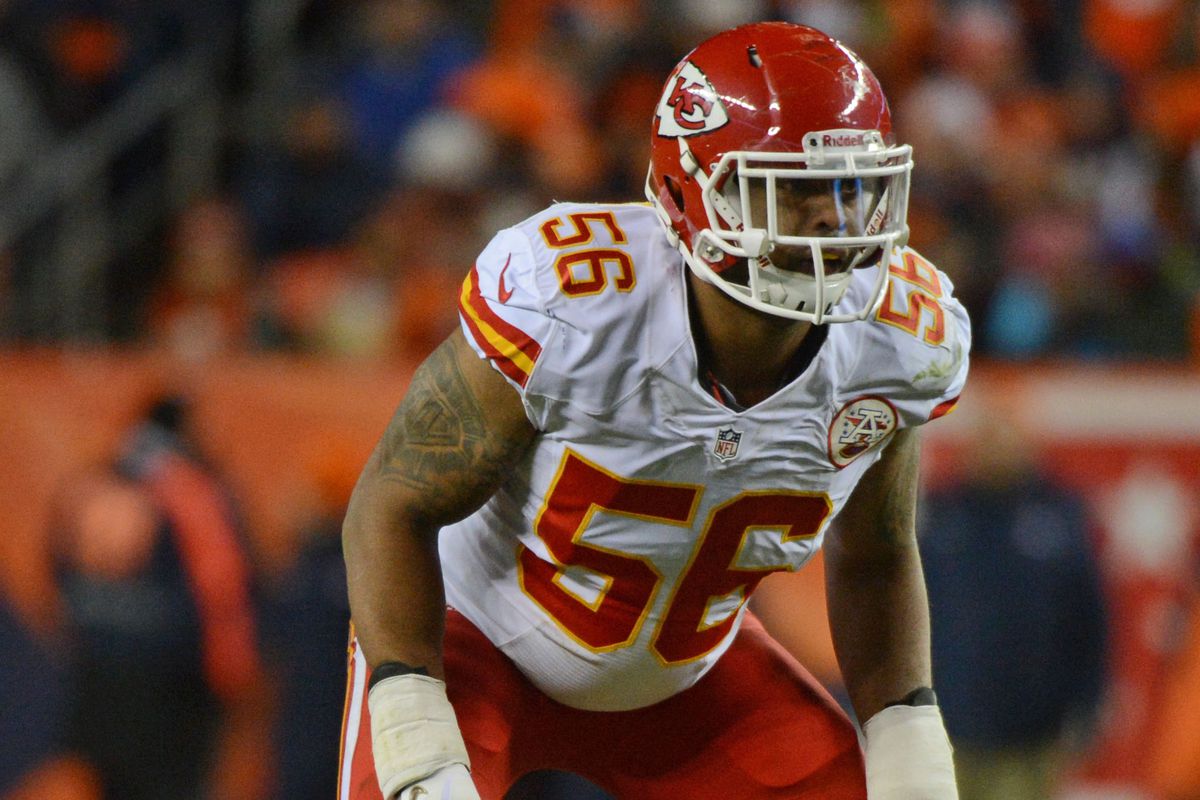I. Introduction

Linebackers are an integral part of a football team’s defense, playing a crucial role in stopping the opposing team’s offense. In this article, we will explore the significance of linebackers in football and provide an overview of the linebacker position.
A. Significance of linebackers in football
Linebackers act as the backbone of a football defense, responsible for key plays in both run and pass defense. They are often considered the leaders of the defense, helping to coordinate and communicate schemes on the field. Linebackers can drastically impact the outcome of a game by making tackles, defending against the pass, and disrupting the opposing team’s offensive strategies.
B. Overview of the linebacker position
Linebackers generally line up behind the defensive linemen and in front of the defensive backs. They have versatile roles and responsibilities, depending on the defensive scheme and formation. Linebackers are categorized into two primary positions: middle linebacker (MLB) and outside linebackers (OLB). These positions have specific roles and responsibilities that we will explore in the following section.
II. Linebacker Roles and Responsibilities
Understanding the roles and responsibilities of linebackers is crucial in comprehending their importance within a football defense. The two main linebacker positions are the middle linebacker and outside linebackers.
A. Middle Linebacker (MLB)
- Leading the defense and calling plays
The middle linebacker is often referred to as the quarterback of the defense. They are responsible for reading the opposing offense, making adjustments, and calling plays to their teammates. They communicate with the defensive linemen and defensive backs to ensure everyone is in the correct position.

- Defending against the run and pass
Middle linebackers must be well-rounded defenders, excelling in both stopping the run and defending against the pass. They are tasked with filling the gaps and making tackles in the running game. Additionally, middle linebackers need to be proficient in pass coverage, often responsible for covering tight ends and running backs in short-to-intermediate passing routes.
B. Outside Linebackers (OLB)
- Setting the edge in run defense
In run defense, outside linebackers play a critical role in setting the edge. They are responsible for maintaining outside containment, preventing running backs from getting to the outside and forcing them back inside toward their teammates. Outside linebackers must have the strength, speed, and agility to shed blocks and make tackles.
- Covering tight ends and running backs in pass defense
Outside linebackers also contribute to pass defense by covering tight ends and running backs in the short to intermediate passing zones. They need to have the coverage skills to stick with athletic tight ends and running backs, disrupting passing routes and potentially intercepting or breaking up passes.
C. Differentiating 3-4 and 4-3 lineups
Different defensive schemes and formations affect the roles and responsibilities of linebackers. In a 3-4 defense, which employs three down linemen and four linebackers, outside linebackers primarily focus on pass rushing, while middle linebackers are responsible for filling gaps in the running game and providing pass coverage. In a 4-3 defense, which uses four down linemen and three linebackers, all linebackers have more balanced responsibilities in defending the run and pass game.
Understanding these different formations and their impact on the linebacker positions is essential for linebackers to adapt to defensive schemes and strategies effectively.
III. Skills and Attributes of Linebackers

Linebackers possess a unique combination of skills and attributes that enable them to excel in their roles on the field.
A. Physicality and tackling technique
Linebackers must be physical players with the ability to shed blockers and make tackles effectively. They need to use proper tackling technique to ensure both their safety and the efficiency of their tackles.
B. Speed and agility
Linebackers must have the speed and agility to cover ground quickly, react to plays, and pursue ball carriers effectively. Their ability to change direction smoothly is crucial when covering pass routes or pursuing runners.
C. Football IQ and situational awareness
Linebackers must possess a high football IQ and excellent situational awareness. They need to read offensive formations, anticipate plays, and make appropriate adjustments based on the offensive setup. Recognizing pass routes and understanding offensive concepts allow linebackers to be in the right place at the right time, disrupting passing plays and making impactful defensive plays.
IV. Training and Development of Linebackers
Linebackers require comprehensive training and development to excel in their roles on the football field. This section will delve into the essential aspects of training and techniques specific to linebackers.
A. Strength and conditioning
/cdn.vox-cdn.com/uploads/chorus_image/image/44267370/usa-today-8086462.0.jpg)
- Building functional strength and explosiveness
Linebackers need to develop functional strength and explosiveness to excel in their physical roles on the field. Strength training exercises such as squats, deadlifts, and Olympic lifts help develop overall body strength and power. Focusing on compound movements that engage multiple muscle groups ensures comprehensive development.
- Core stability and conditioning for endurance
A strong and stable core is vital for linebackers, as it helps generate power and maintain balance during tackles and blocks. Core exercises such as planks, Russian twists, and medicine ball throws should be incorporated into training programs. Additionally, conditioning exercises such as agility drills and interval training enhance endurance, allowing linebackers to perform consistently throughout the game.
B. Linebacker-specific drills and techniques
- Pursuit angles, shedding blocks, and tackling drills
Linebackers must be proficient in pursuing ball carriers, shedding blocks, and making tackles. Pursuit angle drills teach linebackers to take efficient angles to the ball carrier and cut off escape routes. Shedding blocks drills focus on techniques for disengaging from offensive linemen or tight ends. Tackling drills emphasize proper technique, including proper body positioning, wrapping up, and driving through tackles.
- Pass coverage techniques and zone responsibilities
Linebackers are often responsible for covering tight ends, running backs, or zone assignments in pass coverage. Training should focus on backpedaling, reading the quarterback’s eyes, and effectively covering receivers in man-to-man or zone coverage. Footwork drills, hip mobility exercises, and reaction drills help linebackers improve their coverage skills.
C. Film study and mental preparation
- Analyzing opponents’ tendencies and game planning
Film study allows linebackers to understand their opponents’ tendencies, offensive formations, and play-calling patterns. By studying opponents’ tendencies, linebackers can anticipate plays, recognize pre-snap cues, and make informed decisions on the field. They can gain insights into blocking schemes, pass routes, and offensive strategies, enabling them to make effective defensive adjustments.
- Understanding offensive concepts and situational play-calling
Linebackers must also develop a deep understanding of offensive concepts, strategies, and situational play-calling. By familiarizing themselves with offensive schemes, they can react quickly, recognize plays, and be in the right position at the right time. Understanding situational play-calling helps linebackers anticipate play-action, misdirection, and screen plays, allowing them to disrupt offensive plays effectively.
V. Strategies and Tips for Linebackers

Linebackers can enhance their performance through strategic approaches and effective communication on the field.
A. Reading the offense and diagnosing plays
- Keying on specific offensive cues and player positioning
Linebackers must learn to read offensive formations, recognizing pre-snap cues such as backfield alignment, offensive line splits, and receiver positioning. Analyzing player positioning and the alignment of linemen can provide clues about the play type and potential offensive strategies.
- Anticipating play action, misdirection, and screen plays
Linebackers should be able to anticipate plays, especially those involving play action, misdirection, and screen passes. By analyzing offensive tendencies and recognizing key offensive cues, linebackers can react quickly, maintain proper positioning, and effectively disrupt these types of plays.
B. Communication and leadership on the field
- Organizing the defense and relaying play calls
Linebackers often assume leadership roles in the defense, communicating assignments, relaying play calls, and making defensive adjustments. Clear and concise communication before and during the play ensures that the defense is properly aligned and everyone is aware of their responsibilities.
- Providing coverage assignments and making adjustments
Linebackers play a significant role in pass coverage, assigning coverage responsibilities and making adjustments based on offensive formations or personnel. Effective communication helps ensure that no receivers or areas of the field are left uncovered, while adjustments help counter offensive strategies during the course of the game.
VI. Conclusion
Linebackers play crucial roles in football, with specific responsibilities and a skill set that sets them apart from other positions on the field. Through dedicated training, development, and strategic understanding, linebackers can excel in their roles, impacting games and contributing to the success of their teams. By focusing on strength and conditioning, practicing linebacker-specific drills, studying game film, and honing their mental preparation, linebackers can improve their performance and become forces to be reckoned with on the football field.
